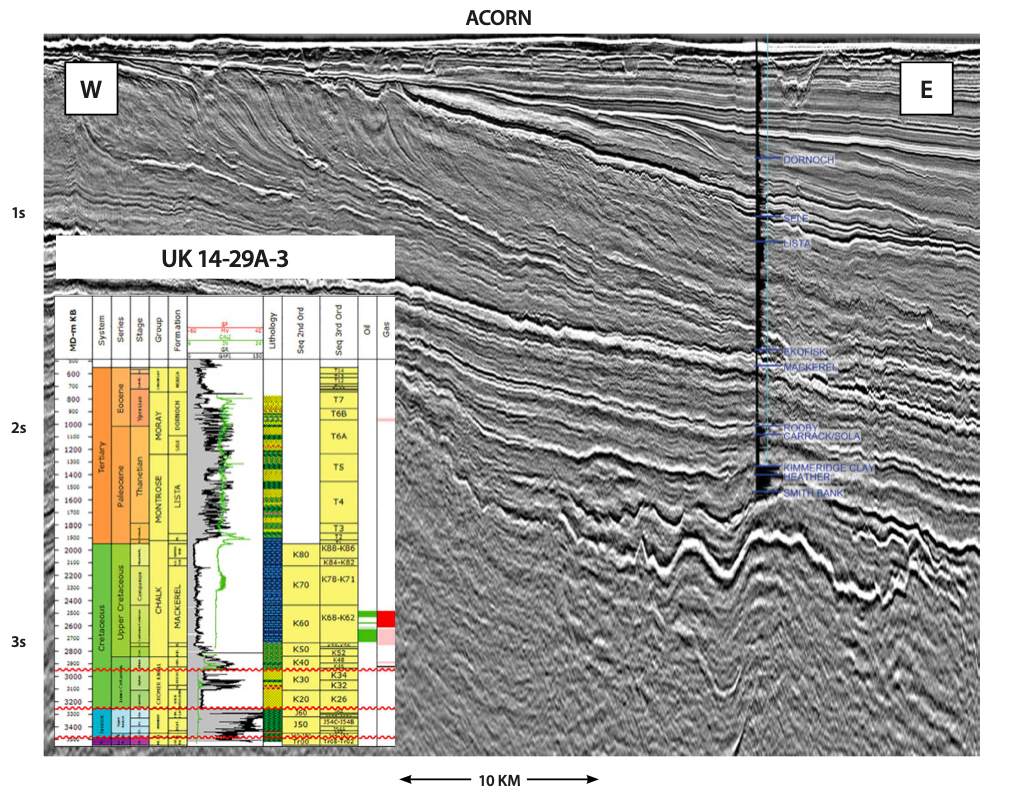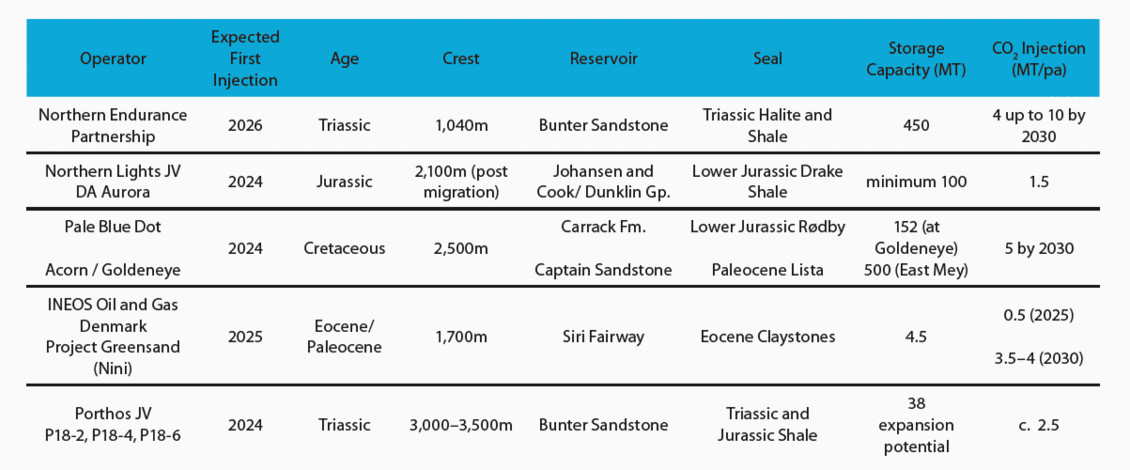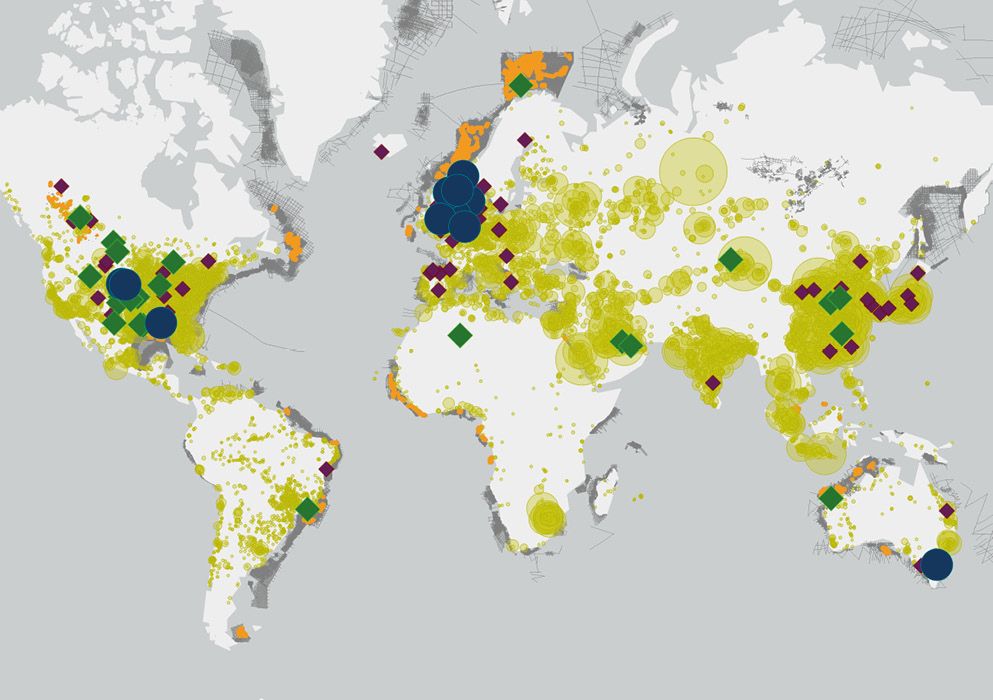



The primary European CCS sites such as Phase 1 of the Acorn project, will target the depleted Goldeneye field whereas the Northern Endurance project has targeted the Bunter Sandstone saline aquifer. Several different transport mechanisms are also planned, e.g., Northern Endurance and Porthos will primarily use pipelines from capture sites associated with industry, port facilities and power generation. Northern Lights will pipe CO2 from a port facility onshore Norway. The onshore port will receive its CO2 via shipping routes initially from emissions captured in the Oslo area; however, longer distance shipping and growth in supply routes is expected to drive expansion of operating storage hubs.
Table 1 summarizes some of the key elements of the existing storage sites. All are sandstone reservoirs possessing good porosities and thick, regionally extensive and often proven shale caprocks. Typically, the saline aquifers offer larger overall storage capacity compared to depleted fields, and all structural crests are deeper than 1,000m to accommodate CO2 in an optimum state for storage. These sites will leverage the vast experience of the oil and gas industry in these play types. Further into the future more exotic solutions may be developed as alternatives; for example, storage within basalts offering a different solution to long-term fixing of CO2 (Kjølhamar et al., 2021) that is currently being tested onshore at sites in Iceland and the US.
Leveraging decades of exploration
Decades of oil and gas exploration has led to the acquisition of vast volumes of subsurface seismic and well data across the North Sea. In more recent times, attention has begun to shift into leveraging this information and the wider geological understanding of the subsurface to evaluate saline aquifers for new potential CCS sites. Regional assessments and containment analysis of various stratigraphic intervals across the North Sea have also seen recent growth in fields of research and wider discussion within the energy industry (e.g., Heinemann et al., 2012; Norwegian Petroleum Directorate, 2014; Lloyd et al., 2021).
A detailed understanding of historical wells and their place in the basin’s broader geological context is crucial to assess a potential candidate site. Reconciliation of all available well data integrated with high-resolution seismic data can build a robust and detailed geological model to accurately predict the presence and properties of potential injection intervals. Existing datasets, such as the TGS Facies Map Browser, are suitable for reconnaissance and identification of CCS sites.
A recent example of new data for CCS is the well NO 31/5–7 (see Figure 3), completed by Equinor in March 2020 close to the Troll field as part of the Northern Lights Project. This was the first dedicated CCS well to be drilled within the North Sea with the objective of assessing the CO2 injection and storage potential.
There is a trade-off to be made when it comes to current subsurface understanding and risking. Depleted fields commonly have the largest amount of available data with which to understand the subsurface and feasibility of injecting CO2. Conversely, older depleted fields will have multiple penetrations from older wells resulting in a different set of risks to consider. Saline aquifers typically don’t have the volume of high quality data from seismic or wells; however, the storage capacity potential can be greater. This data gap between a saline aquifer target with limited data-derived subsurface constraint and an injectable CO2 reservoir must be bridged. If this can be achieved with a cost-effective data acquisition program in the form of a well (as in the case of Aurora site for Northern Lights) or new/ reprocessed seismic data, then less structurally complex saline aquifers may offer lower cost, lower risk carbon storage opportunities.
Monitoring
Site selection has implications for the monitoring solutions. 4D monitoring programs to screen ongoing reservoir conditions need to be fit-for-purpose, cost-effective and supportive of positive margins.
Thus, from a monitoring data perspective an element of the ongoing success of a CCS project is meeting the economic challenge of monitoring the integrity of the store. Fortunately in a basin as mature as the North Sea a vast array of geophysical technologies have been developed, tested and put into wide scale use with increasingly innovative solutions since the oil price started to rise at the end of the 1990s and early 2000s. Industry can draw from this experience to deploy smaller scale, more efficient, higher resolution solutions such as P-Cable-type streamer acquisition together with in well solutions such as optical fiber recording to deliver the data needed to demonstrate conformance and containment of the CO2 stored.
Over the next 10 years Europe will see between three and six major CCS sites come online and likely a clear intent to expand these existing hubs as well as develop new sites. Continued and new support from stakeholders such as regulators, industrial partners, and the public will need to be in place for CCS to be an accepted technology with a key role to play in a sustainable, economically viable and integrated energy system for Europe.





